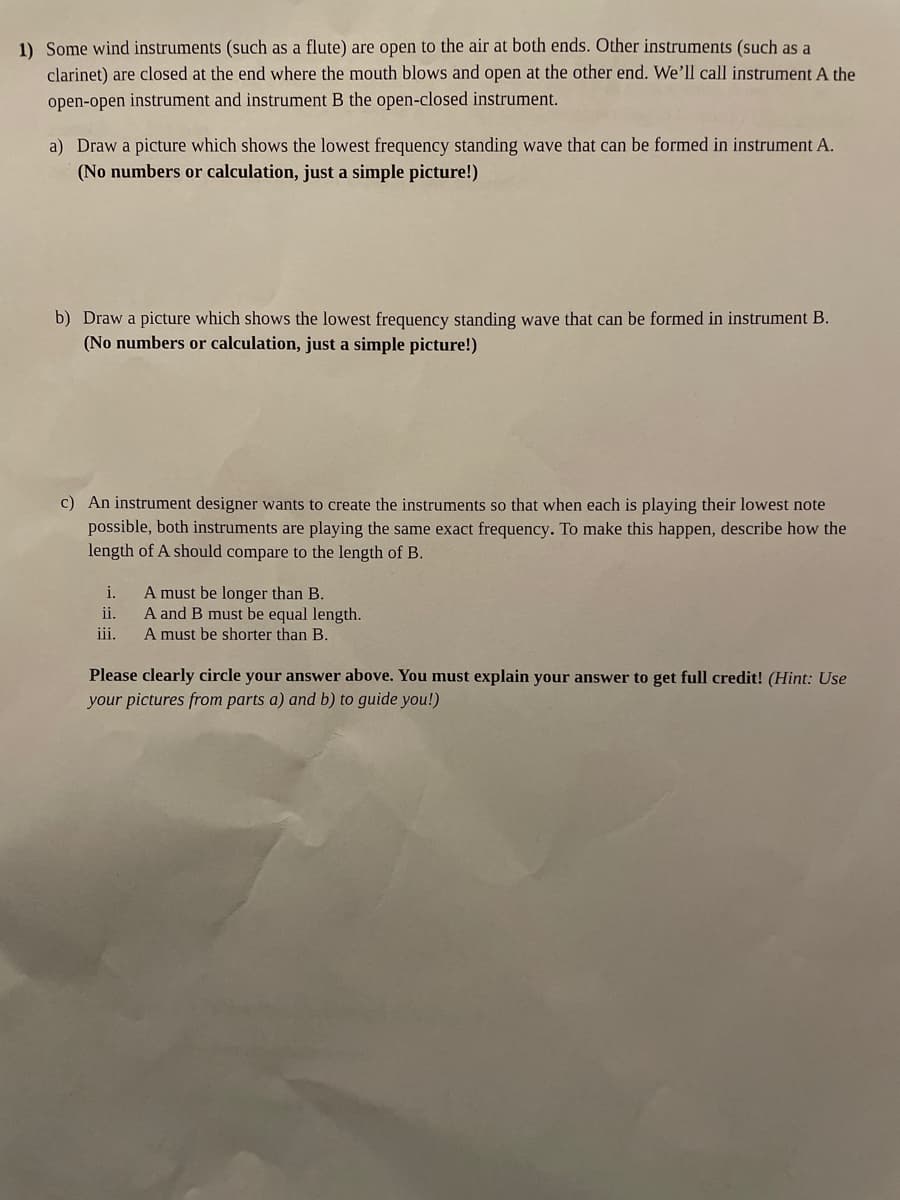1) Some wind instruments (such as a flute) are open to the air at both ends. Other instruments (such as a clarinet) are closed at the end where the mouth blows and open at the other end. We'll call instrument A the open-open instrument and instrument B the open-closed instrument. a) Draw a picture which shows the lowest frequency standing wave that can be formed in instrument A. (No numbers or calculation, just a simple picture!) b) Draw a picture which shows the lowest frequency standing wave that can be formed in instrument B. (No numbers or calculation, just a simple picture!) c) An instrument designer wants to create the instruments so that when each is playing their lowest note possible, both instruments are playing the same exact frequency. To make this happen, describe how the length of A should compare to the length of B. A must be longer than B. A and B must be equal length. A must be shorter than B. i. ii. iii. Please clearly circle your answer above. You must explain your answer to get full credit! (Hint: Use your pictures from parts a) and b) to guide you!)
Properties of sound
A sound wave is a mechanical wave (or mechanical vibration) that transit through media such as gas (air), liquid (water), and solid (wood).
Quality Of Sound
A sound or a sound wave is defined as the energy produced due to the vibrations of particles in a medium. When any medium produces a disturbance or vibrations, it causes a movement in the air particles which produces sound waves. Molecules in the air vibrate about a certain average position and create compressions and rarefactions. This is called pitch which is defined as the frequency of sound. The frequency is defined as the number of oscillations in pressure per second.
Categories of Sound Wave
People perceive sound in different ways, like a medico student takes sound as vibration produced by objects reaching the human eardrum. A physicist perceives sound as vibration produced by an object, which produces disturbances in nearby air molecules that travel further. Both of them describe it as vibration generated by an object, the difference is one talks about how it is received and other deals with how it travels and propagates across various mediums.

Trending now
This is a popular solution!
Step by step
Solved in 2 steps with 2 images









